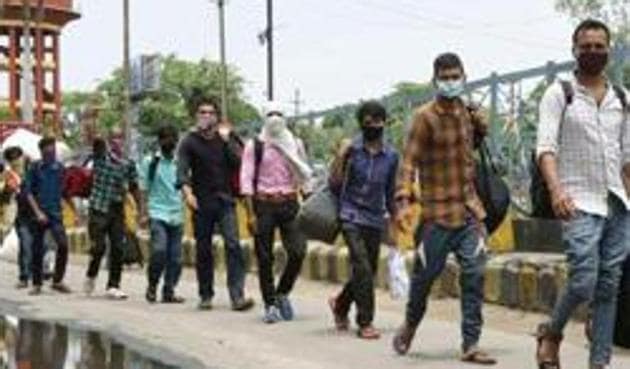Covid-19: We need to restore the idea of village swaraj | Opinion
Rebuilding the village economy can enable people to stay in their communities. The government is trying to achieve exactly that
As the coronavirus disease (Covid-19) wreaks havoc across the world, India faces another massive challenge: How to ensure the safety and the well-being of its poor and marginalised living in urban agglomerations.

Large employment centers such as Mumbai, Delhi and Ahmedabad are struggling to contain the spread of the deadly virus. The problem gets further complicated for those who live in congested slums and ghettos where social distancing is at best a misnomer. Add to that, the poor and migrants are unemployed, and, in the immediate future, face an uncertain future.
It must be addressed. Perhaps, the issue does not need a brand new solution but the one that the Father of the Nation Mahatma Gandhi had suggested: Gram swaraj – his talisman, the fruit of his life-long search for answers of India’s many ills. His pioneering idea of swaraj or self-rule emanated from the very foundation of the Indian society, its villages, and implied self-reliance. Gandhi envisioned his ideal village as a self-sufficient republic – independent of its neighbours for its own wants, and, yet, interdependent for those dependent on it.
“I am convinced that if India is to attain true freedom and through India the world also, then sooner or later the fact must be recognised that the people will have to live in villages, not in towns, in huts, not in palaces,” he said.
In 1929, he wrote in Young India: “We are inheritors of a rural civilisation. The vastness of our country, the vastness of the population, the situation and the climate of the country have, in my opinion, destined it for a rural civilization... To uproot it and substitute for it an urban civilization seems to me an impossibility.”
The post-lockdown images of migrant labourers walking back on feet or thronging bus and train stations caused a massive furore. Migrants are aware that, without work, they can’t survive in cities. In contrast, in their villages, they have a well-established food supply and free shelter. Anyway, if they don’t have work in their destination cities, they have no good reasons to stay away from the family. Most of them are employed in low-end, low-value, hazardous work, which is further compounded by a lack of identity and legal protection. For them, villages are still a better option, with a social security net.
Nearly one-fifth of India’s labour force – about 100 million – are migrants. Of this, a vast majority are from Bihar and Uttar Pradesh (UP). In the case of UP, half a million workers from around the country have returned home after the lockdown. To make them financially independent, the UP government has constituted a committee of high-ranking civil servants which is trying to prop up the village economy. The committee has also been asked to adopt a holistic approach and develop short- and long-term plans for migrants.
One of the first such tasks the UP government has taken is to reopen the closed and defunct mills, especially those in the food business – the flour, oil and pulse mills. It’s reviving small units such as dairies, and ensuring them security and support to employ the local workforce, and eventually, cater to foreign markets.
The government is also trying to revive the micro, small and medium enterprises (MSME) sector, which has over 70 lakh units in the state – the largest share in the country. The MSME minister Sidharth Nath Singh recently connected with over 100 US-based companies that showed interest in expanding their existing businesses in the state. “But they want us to introduce some relaxations in labour laws,” Singh told the press.
Rebuilding the village economy can enable people to stay in their communities. Small scale industries, local mills, cottage and home-grown products can make this happen if supported with an efficient distribution system and conducive laws.
According to British Governor in India, Sir Charles Metcalfe, “The village communities are little republics having nearly everything they want within themselves and almost independent of foreign relations. They seem to last where nothing else lasts.” Such an idyllic village life was lost to the pursuit of a modern India seeking city-centric industrialisation and economic activity.
But all is not lost. Adversities can be turned into opportunities. The coronavirus pandemic offers one that could help us implement the ideals of villages in practice. It’s time we correct this anomaly.
Shesh Narain Singh is a senior journalist, columnist and political analyst. He is political editor, Deshbandhu and Consultant, News18 India. Vineeta Dwivedi is a former broadcaster and journalist, and teaches Communication at Bhawan’s SP Jain Institute of Management and Research (SPJIMR), Mumbai
The views expressed are personal



